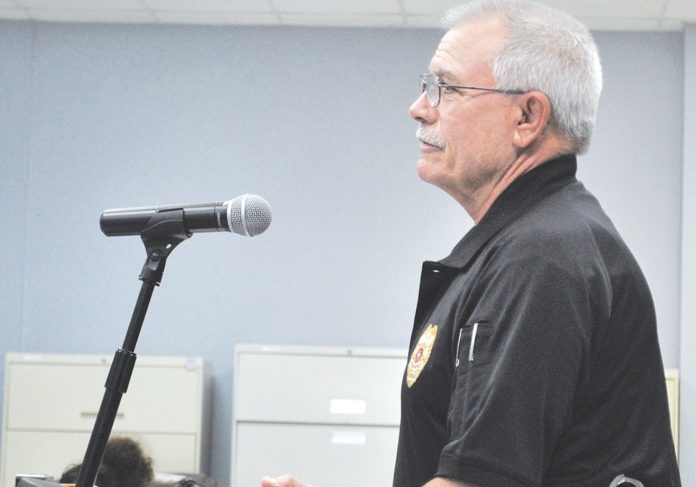
By Mindy Ragan Wood
Staff Writer
Vigilant council members who keep up with the Piedmont Rants & Raves Facebook page discussed a long thread of comments regarding police department policy during the Monday night city council meeting.
Council members directed questions to Police Chief Scott Singer about police officers who photograph citizens during traffic stops as it was discussed on the social media page.
Singer said the digiticket system comes with the option of taking photographs and is used for court purposes only.
“It’s used for two purposes, one is for the identification of the person and two it’s used for the capturing of any other evidentiary items such as expired tags, parking violations and that kind of thing. It’s used at the discretion of the officer. It’s encrypted and nobody can extract that picture and use it except for the court program administrators. That’s the only time the picture can be viewed. We permit filming by body cam, and we were one of the first to use body cams. We’ve been using digiticket for a number of years and this is the first time we’ve ever had a complaint.”
He said the issue got out of hand on Facebook by “a lot of people who know very little of the digiticket camera system.”
Councilman John Brown asked who in the police department and courts could view the photographs.
“The court clerk, the assistant court clerk and the deputy chief,” Singer answered. “I don’t even have a way to view because I have no need to.”
Council member Melissa Ashford asked if the photographs enter the Oklahoma State Court Network, a system which is accessible to the public for record searches on arrests and citations.
“No, it’s downloaded by our system to the court clerk system and that’s where it remains. Only the court clerk (not the public) has the authority to view those pictures,” he answered.
Singer said the department is not violating anyone’s constitutional rights because there is no “reasonable expectation of privacy” during traffic stops and that citizens are also free to photograph and film an officer who has stopped them.
He pointed out that many people officers stop are not carrying ID.
“They give us a name, a date of birth or social security number and we’re not able to confirm. We write them a citation and it ends up going to warrant and when it goes to warrant, we get complaints saying ‘well that wasn’t me that was driving,’ and it (a photograph) proves they were the one driving or not,” Singer said.
He mentioned an incident where a photograph was useful when a woman claimed to be her twin sister.
“Not too long ago, one twin who was driving was using her sister’s information to escape getting a ticket. It went to warrant and she told the court clerk she was not the one driving. The clerk told her, ‘we have your picture.’ When she showed up, she noticed on the photo that there was a picture of a tattoo on the wrist of her twin sister that was not on her wrist. It helped identify that the twin did in fact fraudulently use her sister’s information to get out of a citation. Therefore, were able to turn around, go to district court and file on behalf of the sister and the state with the use of that information and obtain a conviction. These cameras are not for embarrassment’s sake or to rob someone of their civil rights. They are simply for evidentiary purpose and limited as to their distribution,” Singer said.
Ashford asked why it was necessary to photograph a person who has a license.
“Then why do we need driver’s licenses with our pictures on them? That’s in the DMV which is our picture which you have when you run our license,” she said.
“Actually, we don’t have that. We have your license in our hand but again, as I’ve mentioned before, a number of people don’t carry ID,” Singer said. “The officer can take a photo of the driver, whether they carry a license or not isn’t really the issue. The issue is that it’s a feature on the digiticket and it’s one that we use. The majority of the time we use it, but until just recently it hasn’t been an issue.”
Brown suggested that officers let citizens know before the officer takes a photo with the device and that it is for identification purposes.
Yukon Police Chief John Corn said his officers do not routinely photograph people at traffic stops. They use a digital ticket system.
“We do not have a policy that dictates whether a photo can be taken. It was never a question for us until we started using the electronic ticket writers. Our devices, I want to say are capable of capturing an image but as a routine practice, we do not. If you scan a license and get a warrant tip on the individual, you can snap a photo with your ticket writer and compare it to a warrant photo,” Corn said.
Canadian County Sheriff Chris West said his deputies rely on video cameras.
“I don’t believe we have a policy on that. We’re already capture images through in-car video recording equipment. It captures the vehicle in front of you and if they get out of the car, it captures it. It can record them in our vehicle if they’re in the vehicle,” West said.





